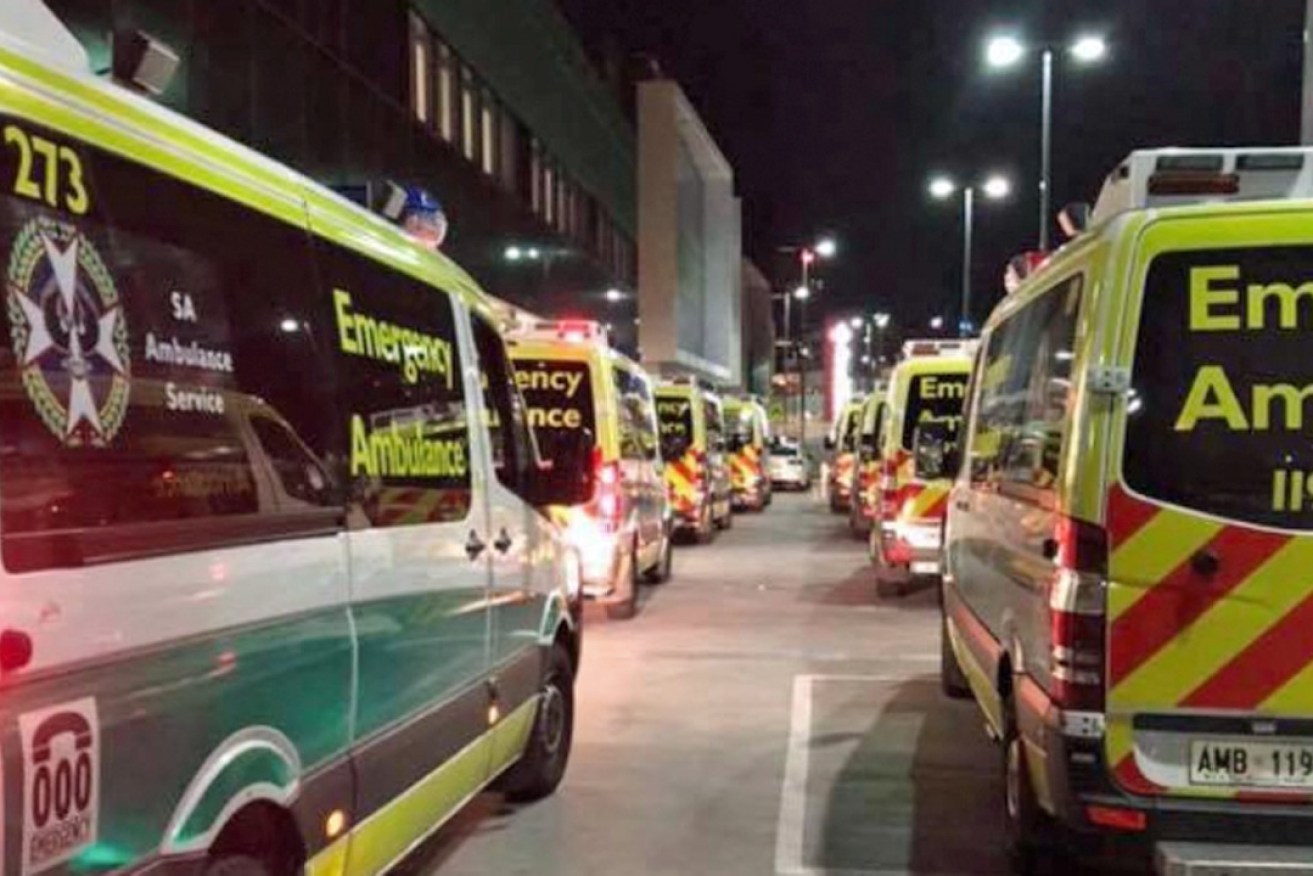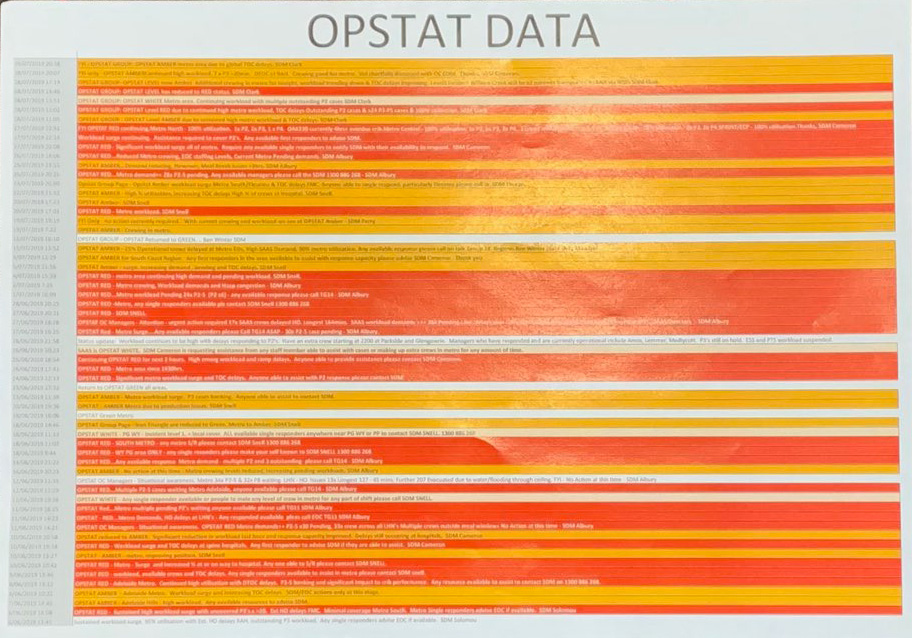Ambulances spent 2303 hours ramped outside Adelaide hospitals last month
Patients were forced to wait in ambulances outside Adelaide’s crowded public hospital emergency departments for a staggering 2303 hours in September – the worst ramping figures in the state’s history.


A photo posted on the Ambulance Employees Association Facebook page, showing ambulances being "ramped".
The figures, released to InDaily by the office of Health Minister Stephen Wade this morning, represent a concurrent total of 95 days – or more than three months – stuck waiting outside hospitals during the 30 days of of last month.
It’s the longest recorded period South Australian ambulances have ever spent waiting on hospital ramps during a single month.
It is more than 200 hours longer than in August, when paramedics spent 2090 hours on the ramp – the previous record-longest period.
Ambulances stuck on the ramp cannot attend to other patients who call 000.
The SA Ambulance Service (SAAS) was overwhelmed by patient demand on 30 occasions during the months of June and July this year.
That’s according to a document (below), which the Ambulance Employees Association says it obtained as part of its SA Employment Tribunal dispute with the State Government.
The Government took the union to the tribunal after paramedics threatened to refuse to do overtime.
The document shows, in red, the number of code reds between June and July under the SA Ambulance Service’s capacity management plan.
A union representative told InDaily it was releasing only a blurred photograph of the document, in order to demonstrate the problem while protecting the identities of employees it mentions.

A code red means “levels of demand are having a sustained impact on SAAS ability to deliver safe, quality patient services” and “despite implementation of contingencies and plans … events / factors are affecting service delivery”.
Last month, the union said a 90-year-old woman died after waiting in an ambulance outside of the Flinders Medical Centre for more than an hour.
Minister Wade said in a statement that: “We do not accept ramping and are rolling out a range of strategies to stamp it out.
“While there is no silver bullet we are seeing green shoots through initiatives such as our priority care centres, which (are) diverting hundreds of patients away from our emergency departments when appropriate to do so.
“During September, we experienced a significant spike in demand and I am absolutely sure that without initiatives like our priority care centres, our hospitals and ambulance would have been under more stress.”
Opposition Health spokesperson Chris Picton said the hours ambulances spend ramping has doubled since the last election.
“These figures show what a disgraceful state the hospital system is in at the moment,” he said.
“The government’s response to this isn’t investment … and opening more beds – it’s to cut doctors and nurses.
“That will only make this situation worse.”
Last month, the Government began offering redundancy packages to staff at Adelaide’s central hospitals in what the Opposition described as a “wave of job cuts” for doctors and nurses.
It announced that staff within the Women’s and Children’s Hospital and the Central Adelaide Local Health Network – which runs the Royal Adelaide Hospital and the Queen Elizabeth Hospital – would be eligible for voluntary separation packages.
CALHN CEO Lesley Dwyer said at the time that a recent staff survey had revealed many employees wanted to leave – and emphasised that her agency had to live “within its means”.
“Over the past few months we have been redesigning the way we work to ensure service delivery continues to put patients at the centre of everything we do, and so that we can become more efficient in the way we do things,” she said in September.
“We need to operate within our means, and to bring CALHN back to a size and a shape that will allow us to realise the ambition that we have for the future.
“This process is not about targeting individual staff; rather offering VSPs gives us the opportunity to realign our resources.”
Want to comment?
Send us an email, making it clear which story you’re commenting on and including your full name (required for publication) and phone number (only for verification purposes). Please put “Reader views” in the subject.
We’ll publish the best comments in a regular “Reader Views” post. Your comments can be brief, or we can accept up to 350 words, or thereabouts.
InDaily has changed the way we receive comments. Go here for an explanation.




